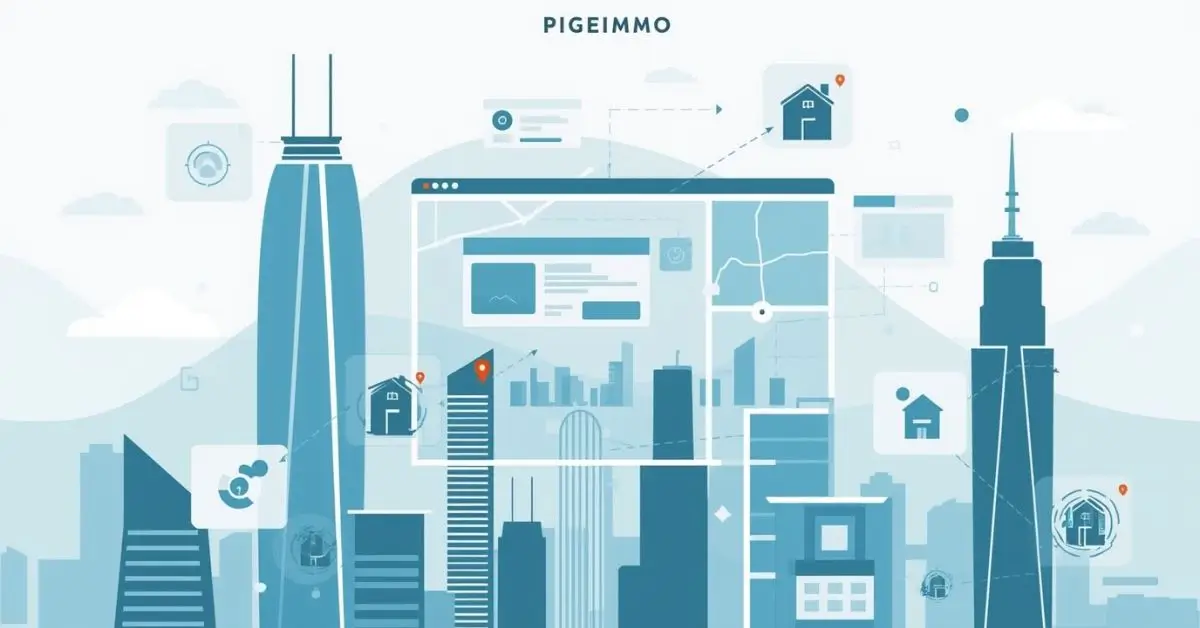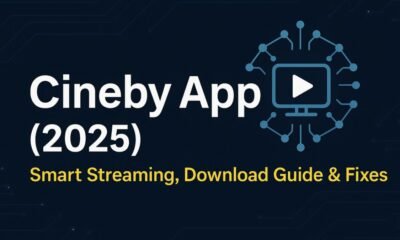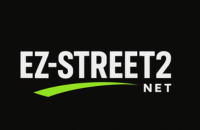BUSINESS
Behind the Wheel: How Much Do Bus Drivers Really Make

The Bus Driver Salary Landscape
Public Transit vs. School Bus vs. Charter Services
Behind the Wheel Bus driver wages fluctuate notably across different sectors. In city transit systems, operators often enjoy union-backed pay scales, comprehensive benefits, and opportunities for overtime. By contrast, school bus drivers may rely on shorter daily shifts but can count on steadier, seasonal schedules. Charter or intercity bus roles can offer mileage-based pay with higher per-trip rates—but may involve irregular hours, including nights and weekends.
Regional Pay Disparities
The cost of living and regional demand for transit services heavily influence earnings. Urban areas tend to offer higher driver pay to attract and retain staff amid higher living expenses. For instance, metropolitan drivers in Washington, D.C., Chicago, or Los Angeles often start at a stronger base salary than counterparts in smaller towns or rural routes.
Common Compensation Components
Hourly Wages and Annual Salary
Bus driver earnings are typically hourly, translating into an annual figure based on full-time hours—roughly 2,000 per year. The mid-range paycheck is often around $35,000 annually, but with overtime and experienced roles, annual earnings can exceed $50,000.
Overtime Pay and Shift Premiums
Transit agencies rely on overtime to cover extra trips, late-night service, or busier routes. Some drivers receive shift differentials—extra dollars per hour for evening, weekend, or holiday shifts—or additional compensation for training and safety responsibilities.
Benefits and Perks
Full-time drivers in municipal systems generally receive employer-sponsored healthcare, pension or retirement plans, paid time off, and occasionally tuition reimbursement or professional development. Even part-time drivers may qualify for prorated benefits depending on state and company policies.
What Influences Bus Driver Pay?
Experience and Seniority
Like many public sector roles, transit agencies use tiered salary structures. As bus drivers accrue years of experience, they typically progress through pay bands, earning more with each milestone.
Specialized Endorsements and Qualifications
Holding endorsements such as Passenger (P), School Bus (S), or Hazardous Materials (H) on the Commercial Driver’s License (CDL) can unlock higher-paying roles. A school bus license, for example, may be a requirement in many school districts and potentially complemented by stipends or extra pay rates.
Route Complexity and Geography
City or highway routes that require navigating congested streets, managing rush-hour traffic, or using advanced transit technology (like bus rapid transit, GPS systems, or hybrid fuel vehicles) often command higher pay. Rural or simpler routes typically offer less compensation.
Career Growth: Advancing Behind the Wheel’s
Becoming a Trainer or Mentor
Experienced drivers may step into roles like driver trainer, where they guide new recruits in safe and efficient operation. These positions often include training bonuses or higher base pay.
Transitioning to Dispatch or Supervisory Roles
Some drivers move into dispatch coordinator positions, managing scheduling and operational logistics. Others elevate to supervisory roles that involve incident response, feature additional responsibilities, and open up administrative pay scales.
Specialized Assignments and School Contracts
Drivers with specialized endorsements may take on school route assignments, summer field trips, or shuttle services for major events—each offering unique pay opportunities.
Real-World Earnings Examples
Let’s look at some typical compensation scenarios:
-
Entry-Level Urban Transit Driver: Starts around $20–$22 per hour (≈$40,000 full-time). Add overtime, and the annual take-home can exceed $50,000.
-
Seasonal School Bus Driver: Paid roughly $18–$20 per hour, with around 7 hours per school day and limited summer work—leading to an $18,000–$22,000 yearly baseline.
-
Experienced Charter Bus Operator: May earn $25–$30 an hour, with substantial variability depending on route lengths and trip frequency.
Maximizing Your Bus Driver Income
Embrace Overtime and Shift Premiums
Opting into extra runs or evening shifts can significantly boost earnings. When you pick up weekend or holiday routes, be sure to verify any designated shift differential rates in your contract.
Upskill with Additional Endorsements
Obtaining Passenger, School Bus, or even hazardous materials endorsements on your CDL not only enhances job security but also opens the door to specialized assignments with higher pay.
Consider Cross-Sector Opportunities
Sometimes inter-city or long-distance routes with private companies pay more per trip, though they may lack public-agency benefits. Weigh the balance of compensation, flexibility, and overall stability.
Keep an Eye on Union Negotiations
Public transit workers often engage in collective bargaining for pay hikes, benefit improvements, and better work rules. Staying informed and involved can pay dividends when contracts are re-negotiated.
Pros and Cons of the Bus Driving Profession
Pros
-
Stable Employment and Benefits: Public transit roles often include health insurance, retirement plans, paid vacation, and sick leave.
-
Regular Schedule: Many transit systems offer predictable daily shifts.
-
Community Role: Drivers frequently become local figures, supporting daily commuters and students.
Cons
-
Physically and Mentally Demanding: Navigating traffic, managing schedules and passengers, and standing for long periods can be tiring.
-
Irregular Hours: Evening, early morning, weekend, and holiday shifts are common.
-
Start-and-Stop Traffic: Urban routes can be stressful due to congestion and constant driving adjustments.
How to Become a Bus Driver
Securing a Commercial Driver’s License (CDL)
The CDL process typically includes a general knowledge test, a commercial vehicle skills evaluation, and, depending on the desired role, endorsements like “P” (Passenger) or “S” (School bus).
Meet Minimum Requirements
Candidates must usually be at least 21 in many states (18 for intrastate positions), pass background checks, obtain medical certification, and have a clean driving record.
Training and Onboarding
New drivers undergo hands-on instruction, including classroom hours and route practice with seasoned trainers. This ensures they’re comfortable managing passenger interactions, handling bus systems, and operating safely.
Emerging Trends in Transit Careers
Transition to Clean Energy Fleets
Electric and hybrid buses are increasingly common. Drivers working with these buses often receive additional technical training—and may earn higher compensation for handling specialized vehicle systems.
Integration of Safety Tech
In-vehicle cameras, collision warning systems, and real-time passenger information systems are becoming standard. Drivers at agencies implementing these technologies sometimes receive pay premiums or stipends for mastering new platforms.
Growth in On-Demand Transit
Some public systems are exploring microtransit or on-demand shuttles. These newer services offer flexible schedules and may offer creative pay models to drivers.
Frequently Asked Questions
Q: How much does a bus driver make per hour?
It varies from $18 to $30 per hour based on region, sector, and experience—with average public transit rates around $20–$22 per hour, and seasoned charter drivers earning more.
Q: Do bus drivers get benefits like health insurance?
Yes, full-time public transit drivers generally receive comprehensive healthcare, retirement plans, paid leave, and other union-negotiated benefits. Part-time roles may have pro-rated perks depending on the employer.
Q: Can I drive a school bus without prior experience?
Yes. Most school district jobs provide entry-level training if you earn the required endorsements (CDL with Passenger and School endorsements) and meet background and medical checks.
Q: Is being a bus driver stressful?
The job carries pressure from traffic, schedules, passenger management, and weather. However, well-trained drivers with supportive supervisors often find it rewarding and manageable.
Q: Are there differences between public and private bus companies in terms of pay?
Yes. Public transit agencies may offer steadier work and benefits, whereas private charter or intercity carriers might offer higher hourly rates but less stability or perks.
Conclusion
Bus drivers play a vital role in community connectivity and public transportation. While base pay typically averages $20–$25 per hour, earnings can grow significantly with overtime, endorsements, and specialized roles. In municipal systems, unionized positions offer pathways to stable benefits and progressive salaries. Meanwhile, well-qualified charter or intercity operators may command premium rates
BUSINESS
How SpokesChoice Helps You Choose Better Brand Ambassadors

The concept of brand representation has come a long way from traditional celebrity endorsements. In earlier years, companies relied on big names to attract attention, assuming fame equaled trust. Today, consumers are more discerning. They seek authentic brand advocacy — voices that reflect their values, lifestyles, and beliefs.That’s precisely the gap SpokesChoice fills.
It helps brands identify, evaluate, and connect with credible personalities — from nano-influencers to industry experts — who embody a company’s identity. Through AI-driven insights and human analysis, SpokesChoice allows marketing teams to create relationships that feel organic, not transactional.
One marketing director described it perfectly:
“With SpokesChoice, we stopped guessing who could represent us. We started connecting with people who believed in our message.”
Why Brand Spokesperson Selection Matters More Than Ever
Choosing a brand spokesperson is no longer a vanity decision — it’s a strategic necessity. In the era of instant communication and online transparency, your spokesperson is the face of your credibility. The right brand spokesperson selection can elevate trust, drive engagement, and create lasting emotional connections with audiences.
The Core Reasons It Matters
- Trust and Authenticity: A spokesperson who truly resonates with your target audience enhances brand integrity.
- Consistency: A unified voice ensures your message stays recognizable across platforms.
- Longevity: A great partnership can evolve with the brand, not just serve as a campaign tool.
SpokesChoice understands that one size never fits all. Its intelligent algorithms factor in personality fit, engagement quality, and even sentiment analysis to help brands make data-backed choices.
SpokesChoice and the Search for the Best Brand Ambassadors
What separates the best brand ambassadors from average influencers? It’s not follower count — it’s credibility and relatability. Consumers today care more about honesty and shared experiences than celebrity status.
SpokesChoice identifies ambassadors who don’t just promote — they connect. Through a proprietary authenticity score, brands can review ambassadors based on their content tone, audience alignment, and engagement ethics.
Traits of the Best Brand Ambassadors
- Deep understanding of the brand’s values.
- Consistent, transparent communication with followers.
- A history of audience trust and low controversy risk.
- Measurable impact beyond likes — actual conversions and loyalty.
By curating this balance, SpokesChoice ensures that every collaboration feels natural and mutually beneficial.
Crafting a Winning Spokesperson Marketing Strategy
A successful spokesperson marketing strategy doesn’t start with promotion — it starts with storytelling. The story your spokesperson tells must align with your brand narrative, mission, and customer aspirations.
SpokesChoice helps marketing teams build a step-by-step roadmap for effective campaigns. From identifying potential ambassadors to content rollout and performance analytics, it transforms spokesperson marketing from guesswork into a measurable process.
The Three Pillars of a Strong Strategy
- Alignment: Does the spokesperson reflect the brand’s ethos and audience values?
- Engagement: Does the spokesperson’s communication style enhance brand interaction?
- Evaluation: Are campaigns backed by performance data and sentiment metrics?
By focusing on these principles, SpokesChoice empowers brands to move beyond vanity metrics toward meaningful relationships.
Influencer Endorsement Choices: Balancing Reach and Relevance
Not all influencers make good spokespersons. While influencer marketing is widespread, it’s often plagued by mismatches — high reach but low authenticity. Influencer endorsement choices through SpokesChoice address this issue by focusing on personality alignment rather than popularity.
For example, a tech company might find better results partnering with a micro-influencer who shares in-depth tutorials than with a celebrity who posts generic ads. SpokesChoice analyzes tone, engagement depth, and audience overlap to recommend the most relevant voices for endorsement.
This shift toward credible spokesperson options represents a broader change in marketing psychology: brands are moving away from “big name” thinking to “right voice” strategy.
A Spokesperson Comparison Guide for Brands
Selecting the right spokesperson requires an analytical approach. Below is a spokesperson comparison guide that highlights what SpokesChoice evaluates during its selection process.
| Criteria | Traditional Spokesperson | SpokesChoice-Optimized Spokesperson |
|---|---|---|
| Selection Method | Based on popularity | Based on AI-driven audience fit |
| Engagement | Often superficial | Deep, community-driven |
| Brand Alignment | Limited analysis | Measured by value compatibility |
| ROI Tracking | Difficult to quantify | Integrated performance analytics |
| Risk Assessment | Reactive | Proactive with sentiment tracking |
This guide underscores how SpokesChoice modernizes an outdated process, ensuring brands minimize risks while maximizing credibility.
Brand Spokesperson Reviews: What Companies Are Saying
Marketers and business owners across industries are taking notice. In brand spokesperson reviews, many highlight SpokesChoice’s ease of use and its impact on engagement metrics.
One small business owner shared,
“We used to rely on influencer databases, but SpokesChoice gave us insight into who actually fits our brand personality. That changed everything.”
From fashion startups to SaaS companies, users report an average 40% improvement in audience retention and a notable boost in brand sentiment scores within six months.
Top Spokesperson Picks for 2025
SpokesChoice’s yearly top spokesperson picks list is rapidly becoming an industry benchmark. In 2025, selections highlight individuals who blend thought leadership with relatability. These aren’t just influencers — they’re advocates who inspire, educate, and engage.
Categories include:
- Tech Visionaries: For innovation-driven brands.
- Sustainability Advocates: For eco-conscious companies.
- Lifestyle Connectors: For consumer goods and lifestyle products.
- Health & Wellness Experts: For healthcare and fitness campaigns.
Each category showcases personalities who represent their industries with integrity, proving that the future of brand representation lies in purpose-driven advocacy.
Spokesperson vs Influencer Marketing: Key Differences
While they may overlap, spokesperson vs influencer marketing reveals fundamental distinctions. Influencers typically promote multiple brands, while spokespersons form deeper, long-term partnerships with one.
SpokesChoice bridges this gap by blending the reach of influencers with the loyalty of spokespersons. The result? Campaigns that feel both wide-reaching and personal.
| Aspect | Spokesperson | Influencer |
|---|---|---|
| Relationship Type | Long-term partnership | Short-term collaboration |
| Tone of Communication | Authentic, authoritative | Trend-based, casual |
| Audience Connection | Deep and emotional | Broad and variable |
| Campaign Duration | Ongoing | Limited-time |
Understanding this distinction helps brands allocate marketing budgets more effectively and build stronger customer relationships.
Credible Spokesperson Options: Building Trust in a Skeptical Era
In an age where misinformation and overpromotion run rampant, audiences value credible spokesperson options more than ever. They want honesty, not hype. SpokesChoice ensures credibility through:
- Background Vetting: Analyzing reputation history and online presence.
- Audience Sentiment: Measuring tone and feedback across platforms.
- Brand Fit Evaluation: Matching values, tone, and mission statements.
This rigorous vetting process helps brands protect their image while promoting authentic connections.
Brand Endorsement Recommendations That Work
Successful endorsement strategies go beyond partnerships; they foster brand love. SpokesChoice uses data insights to create brand endorsement recommendations tailored to specific demographics, industries, and tone preferences.
For instance, a skincare brand might partner with a dermatologist known for transparency, while an esports company might choose a professional gamer with credibility among fans. Each recommendation is unique, evidence-based, and optimized for real impact.
Public Image & Brand Representation: The Power of Perception
A brand’s public image and brand representation shape its identity. Your audience doesn’t just buy products — they buy trust, emotion, and community.
SpokesChoice helps ensure this perception remains positive through constant analysis of public sentiment. It alerts brands to potential reputation risks early, enabling proactive management of their narrative.
Choosing a Brand Voice That Resonates
Every brand has a tone — the secret lies in choosing a brand voice that feels consistent yet flexible across platforms. Whether warm and friendly or professional and expert, the voice must connect emotionally.
SpokesChoice simplifies this process by helping brands define their persona and pairing them with spokespersons who embody that tone authentically.
Product Promotion Spokesperson: The Human Touch in Digital Marketing
Even in the most data-driven campaigns, human connection matters. A product promotion spokesperson bridges that emotional gap between brand and buyer.
SpokesChoice helps identify who can deliver your message with sincerity and relevance. The platform provides case studies, audience insights, and performance data — helping marketers craft stories that convert.
Authentic Brand Advocacy: Building Lasting Loyalty
In 2025, authentic brand advocacy defines successful marketing. Consumers no longer trust scripted endorsements. They trust stories, values, and proof.
SpokesChoice cultivates genuine advocacy by connecting brands with representatives who live the brand — not just advertise it. This authenticity turns audiences into communities and customers into ambassadors.
Spokesperson Branding Tips for 2025
For brands ready to elevate their visibility, here are expert spokesperson branding tips to thrive in 2025:
- Prioritize authenticity over reach. Micro-spokespersons often outperform celebrities in engagement.
- Monitor public sentiment regularly. One misstep can damage credibility.
- Invest in long-term partnerships. Consistency fosters recognition and trust.
- Diversify representation. Feature spokespersons from different backgrounds and demographics.
- Leverage storytelling. People connect with stories, not slogans.
Each of these strategies aligns with SpokesChoice’s goal — helping brands create relationships rooted in trust and shared values.
FAQ’s
SpokesChoice is an intelligent platform that helps brands discover, analyze, and collaborate with ideal spokespersons. It combines AI-driven analytics with human insight to ensure authentic partnerships.
It evaluates data points like tone, credibility, engagement quality, and value alignment, ensuring brands choose spokespersons that truly represent their identity and goals.
Absolutely. SpokesChoice offers scalable solutions for every budget, helping emerging brands find authentic voices that resonate with niche audiences.
Unlike basic influencer directories, SpokesChoice focuses on long-term credibility and audience trust, not just follower counts. It emphasizes storytelling, ethics, and brand alignment.
Conclusion
In 2025, success isn’t defined by who shouts the loudest — it’s defined by who speaks the truth. SpokesChoice is more than a platform; it’s a philosophy that reimagines what authentic representation looks like.
BUSINESS
How Pigeimmo Simplifies Real Estate Automation

At its core, Pigeimmo is an intelligent logiciel de pige immobilière (real estate prospecting software) that automates the process of identifying new property listings, analyzing opportunities, and generating valuable leads immobiliers. Traditionally, pige immobilière referred to the manual process of collecting property advertisements from newspapers or online portals to contact potential sellers.
In 2025, Pigeimmo elevates this practice through automation, real-time alerts, and AI-driven analytics. Instead of spending hours scrolling through property sites, users receive customized notifications about new listings, market trends, and pricing shifts through a unified platform.
“Before using a pige immobilière tool, I’d spend half my day on property websites. Now, I get the right leads directly to my dashboard — and my closing rate has doubled.”
This quote from a seasoned agent reflects what Pigeimmo represents: efficiency, precision, and empowerment in the digital property market.
How Pigeimmo Enhances Prospection Immobilière
Automation Meets Strategy
Traditional prospection immobilière was largely reactive. Agents would wait for listings to appear, contact owners, and compete with dozens of others. Pigeimmo changes that dynamic by enabling proactive lead generation. Through its advanced search filters, machine learning algorithms, and predictive insights, it identifies potential sellers before listings even go public.
With features like alertes d’annonces immobilières (listing alerts) and veille des annonces immobilières (property watch tools), users can monitor specific neighborhoods or property types in real time. This kind of data-driven prospection allows agents to act faster and smarter.
Streamlined Workflow and Integration
Modern agents juggle multiple tools — CRM systems, social media ads, and lead management platforms. Pigeimmo simplifies this with seamless integration, allowing leads immobiliers to flow directly into existing CRMs. This not only saves time but ensures no potential opportunity slips through the cracks.
By linking email campaigns, WhatsApp outreach, and follow-up automation, the platform transforms how professionals manage génération de prospects immobiliers in 2025.
From Leads to Clients: The Power of Génération de Prospects Immobiliers
Generating leads immobiliers is only the first step. Converting those leads into clients requires a mix of timing, personalization, and value. Pigeimmo uses AI to score and prioritize leads based on behavior, intent, and engagement level.
For example, if a property owner repeatedly checks valuation tools or listing comparisons, the system flags them as “high-intent.” Agents can then reach out with relevant offers or consultations. This predictive targeting reduces wasted effort and boosts conversion rates.
Moreover, Pigeimmo provides analytics dashboards showing which campaigns or communication channels yield the best results. It’s a shift from guesswork to measurable, data-backed decision-making.
The Rise of Plateforme d’Investissement Immobilier
Beyond prospecting, Pigeimmo extends its influence to investors through a plateforme d’investissement immobilier — a marketplace where users can explore, analyze, and participate in property deals.
This digital transformation aligns with the global trend toward investissement fractionné immobilier (fractional real estate investment). Instead of buying entire properties, users can invest in shares or portions, democratizing access to real estate wealth.
In 2025, with the rise of decentralized finance and blockchain-backed property assets, Pigeimmo-style platforms allow smaller investors to diversify portfolios without the traditional barriers of high capital or complex management.
Benefits of Fractional Property Investment
- Accessibility: Lower entry costs enable wider participation.
- Diversification: Investors can spread risk across different properties and locations.
- Liquidity: Some platforms offer secondary markets for reselling property shares.
- Transparency: Digital records ensure clear ownership tracking and fair valuation.
With these features, Pigeimmo doesn’t just support agents — it empowers everyday investors to engage with investissement immobilier en ligne safely and strategically.
Technologie Immobilière (Proptech): The Core of Pigeimmo
Technologie immobilière (proptech) has redefined how the real estate industry operates. From smart contracts to AI-based analytics, proptech innovations form the foundation of Pigeimmo’s capabilities.
Key technological pillars include:
- Artificial Intelligence: Predicts property trends, prices, and seller intent.
- Big Data: Aggregates information from multiple sources for detailed market insights.
- Automation Tools: Simplify tasks like contacting sellers, scheduling follow-ups, and maintaining compliance.
- Cloud Infrastructure: Enables secure and scalable access from any device.
These technologies collectively support a marketplace immobilier digital where efficiency meets intelligence. Instead of drowning in data, professionals can extract meaningful insights to act faster.
Using Outils de Prospection Immo to Stay Ahead
Outils de prospection immo (real estate prospecting tools) are now indispensable in an agent’s toolkit. With Pigeimmo, you can track thousands of listings, segment your database, and automate responses — all in one interface.
Examples of Essential Prospecting Features
| Feature | Description | Impact |
|---|---|---|
| Alertes d’annonces immobilières | Real-time notifications for new listings matching your criteria | Respond faster than competitors |
| Suivi des biens en vente | Continuous tracking of property status (price drops, sold, withdrawn) | Maintain updated databases |
| CRM Integration | Syncs contacts and lead data | Enhances organization and follow-up |
| Performance Analytics | Tracks success metrics | Optimizes campaigns and outreach |
| Custom Filters | Filter by region, property type, or price | Targets high-potential areas |
Such logiciel de pige immobilière solutions redefine productivity. Agents can now build long-term relationships, not just chase listings.
Veille des Annonces Immobilières and Market Intelligence
The modern market demands constant vigilance. Veille des annonces immobilières ensures that professionals stay informed about every movement — from new constructions to price adjustments.
This monitoring not only benefits agents but also developers and investors who want to anticipate market trends. With predictive analytics, Pigeimmo transforms raw data into actionable insights, identifying growth zones or undervalued markets before competitors do.
The result? Smarter investments, optimized portfolios, and stronger negotiation positions.
Building an Effective Stratégie de Prospection Immobilière in 2025
A winning stratégie de prospection immobilière today combines automation with authenticity. While technology handles data collection and sorting, human agents must focus on personalized communication and trust-building.
Key Steps for 2025 Success
- Leverage Pigeimmo Alerts: Set filters to match your ideal client profile.
- Segment Your Leads: Classify prospects by motivation and readiness to sell or buy.
- Use Multi-Channel Communication: Combine calls, emails, and social media outreach.
- Track Metrics: Measure your response rate, conversion, and engagement levels.
- Offer Value First: Share market insights or free valuations before pitching services.
This blend of automation and empathy defines the modern agent’s success in the era of digital real estate.
Real-Life Example: How One Agency Doubled Its Listings
A Paris-based agency adopted Pigeimmo in early 2024. Within six months, it reported a 60% increase in qualified leads immobiliers and a 45% faster conversion cycle.
Their secret? Daily veille des annonces immobilières combined with targeted follow-ups using automated messaging. The agency’s director stated:
“Technology doesn’t replace human interaction — it amplifies it. With Pigeimmo, we stopped missing opportunities and started creating them.”
This story exemplifies how Pigeimmo aligns technology with human expertise to unlock real growth.
The Risks and Challenges of Using Pigeimmo
No technology is flawless. While Pigeimmo offers incredible advantages, professionals must be mindful of potential challenges:
- Data Accuracy: Automated systems may misinterpret outdated listings.
- Over-Reliance on Automation: Agents should still verify property details manually.
- Privacy Concerns: Ensure compliance with GDPR when handling client data.
- Learning Curve: Adopting new tools requires initial training and adaptation.
Understanding these risks helps users balance efficiency with due diligence — a key aspect of E-E-A-T compliance (Experience, Expertise, Authoritativeness, and Trustworthiness).
Future Outlook: How Pigeimmo Shapes Tomorrow’s Market
The future of pige immobilière lies in integration — AI, blockchain, and data visualization will merge to create a truly intelligent real estate ecosystem. Platforms like Pigeimmo will evolve into smart marketplaces, combining investissement immobilier en ligne, predictive analytics, and automated negotiation systems.
By 2030, experts predict that over 80% of property transactions will involve some form of digital prospecting or investment platform. Those who adopt early gain not just efficiency but also strategic advantage.
FAQ’s
Pigeimmo is a digital logiciel de pige immobilière designed for real estate agents and investors. It helps identify new listings, generate leads immobiliers, and manage prospection immobilière through automation and analytics.
Unlike traditional outils de prospection immo, Pigeimmo integrates market monitoring, CRM synchronization, and investment opportunities all in one place.
Yes, Pigeimmo offers scalable plans for solo agents and growing firms. The automation tools save time and reduce manual research, making it ideal for small businesses.
Absolutely. Its plateforme d’investissement immobilier and investissement fractionné immobilier options allow users to explore digital property portfolios and track performance with real-time data.
Conclusion
Pigeimmo isn’t just another real estate tool — it’s a symbol of how proptech is transforming the industry. From pige immobilière and prospection immobilière to investissement immobilier en ligne, it bridges the gap between data and opportunity.
BUSINESS
Ad Hoc Analysis: Unlocking Powerful Insights Instantly

Ad hoc analysis is the process of creating custom, on-the-fly data investigations to answer specific business questions as they arise. Unlike scheduled or recurring reports, ad hoc analysis is all about flexibility and speed. It’s the tool you reach for when you need answers now, not next week.
But why is ad hoc analysis so valuable? Because in today’s fast-paced world, waiting for IT or the analytics team to build a new dashboard just isn’t an option. Ad hoc analysis empowers business users to explore data, test hypotheses, and make decisions—without bottlenecks.
Ad Hoc Reporting vs. Ad Hoc Analysis: What’s the Difference?
You’ll often hear ad hoc reporting and ad hoc analysis used interchangeably, but they’re not quite the same. Here’s the breakdown:
- Ad hoc reporting: The creation of one-off, custom reports to answer specific questions. Think of it as a snapshot—a static view of the data at a moment in time.
- Ad hoc analysis: A deeper, more interactive process. It’s about exploring data, drilling down, and uncovering insights that aren’t obvious from standard reports.
In short, ad hoc reports are the output, while ad hoc analysis is the process.
What Is Ad Hoc Reporting? (And Why Does It Matter?)
What is ad hoc reporting? It’s the practice of generating reports on demand, outside of the regular reporting schedule. For example, a sales manager might request an ad hoc report on last quarter’s top-performing products, or a marketing analyst might pull a quick report on website traffic after a new campaign launch.

Real-World Example: Ad Hoc Analysis in Action
A retail manager recently shared,
“We noticed a sudden drop in sales for one product line. Our standard reports didn’t explain it, so I ran an ad hoc analysis. Turns out, a competitor had launched a flash sale in the same region. We quickly adjusted our pricing and recovered sales within a week.”
This is the power of ad hoc analysis: fast, targeted insights that drive real business results.
The Evolution of Ad Hoc Analysis in 2025
In the past, ad hoc analysis was the domain of data scientists and IT pros. Today, thanks to user-friendly BI tools and self-service analytics platforms, anyone can perform ad hoc analysis—no coding required.
Modern platforms like Tableau, Power BI, and Looker make it easy to:
- Drag and drop data fields
- Filter and segment data on the fly
- Visualize trends and outliers instantly
- Share ad hoc reports with colleagues in seconds
This democratization of data means faster answers and more empowered teams.
Why Ad Hoc Analysis Is Essential for Modern Businesses
Agility
Markets move fast. Ad hoc analysis lets you respond to changes, spot opportunities, and address problems before they escalate.
Empowerment
No more waiting for IT. Business users can answer their own questions, test ideas, and make data-driven decisions.
Customization
Every business is unique. Ad hoc analysis lets you tailor your investigations to your specific needs, not just what’s in the standard dashboard.
Continuous Improvement
By regularly performing ad hoc analyses, organizations can identify process improvements, optimize campaigns, and drive innovation.
Ad Hoc Analyses vs. Standard Reporting: When to Use Each
| Feature | Standard Reporting | Ad Hoc Analyses |
|---|---|---|
| Frequency | Scheduled (daily, weekly) | As needed |
| Audience | Broad (executives, teams) | Targeted (analysts, managers) |
| Flexibility | Low | High |
| Purpose | Track KPIs, monitor trends | Answer specific questions |
| Example | Monthly sales report | Why did sales drop last week? |
Use standard reports for ongoing monitoring, and ad hoc analyses for deep dives and urgent questions.
How to Perform Ad Hoc Analyses: Step-by-Step
- Define the Question
What are you trying to answer? Be specific. - Gather the Data
Pull relevant data from your BI tool, CRM, ERP, or spreadsheets. - Explore and Filter
Use filters, pivots, and visualizations to drill down. - Test Hypotheses
Look for patterns, outliers, or correlations. - Create Ad Hoc Reports
Summarize your findings in a clear, shareable format. - Take Action
Use your insights to make decisions, adjust strategies, or inform stakeholders.
Ad Hoc Reporting Tools: What to Look For in 2025
The best ad hoc reporting tools in 2025 offer:
- Self-service interfaces: No coding or SQL required
- Real-time data access: Up-to-the-minute insights
- Drag-and-drop functionality: Build reports visually
- Collaboration features: Share and comment on reports
- Security and governance: Control who can access what
Popular options include Tableau, Power BI, Looker, Qlik, and even Google Data Studio.
Ad Hoc Analysis in Different Industries
Retail
Spot inventory issues, analyze customer behavior, and optimize promotions on the fly.
Healthcare
Investigate sudden changes in patient outcomes, resource utilization, or billing anomalies.
Finance
Drill into unexpected expenses, revenue spikes, or compliance questions.
Marketing
Analyze campaign performance, segment audiences, and test new ideas instantly.
Risks and Challenges of Ad Hoc Analysis
While ad hoc analysis is powerful, it’s not without risks:
- Data Quality: Garbage in, garbage out. Always verify your data sources.
- Overfitting: Don’t jump to conclusions based on small or incomplete data sets.
- Security: Sensitive data must be protected, even in ad hoc reports.
- Analysis Paralysis: Too many ad hoc reports can overwhelm decision-makers.
Best practice: Balance ad hoc analysis with strong data governance and clear business objectives.
Ad Hoc Reporting Definition: Clearing Up the Confusion
Let’s revisit the ad hoc reporting definition:
Ad hoc reporting is the creation of custom, one-time reports to answer specific business questions as they arise, outside of the regular reporting schedule.
It’s a key part of agile business intelligence, enabling organizations to respond quickly to new challenges and opportunities.
Ad-Hoc Analyses: The Secret to Data-Driven Culture
Organizations that embrace ad-hoc analyses foster a culture of curiosity and continuous improvement. When employees can ask questions and get answers fast, they’re more likely to innovate, experiment, and drive results.
A recent tweet summed it up:
“Our team’s best ideas come from ad hoc analyses—sometimes the biggest wins start with a simple question.”
Pros and Cons of Ad Hoc Analyses
Pros
- Speed: Get answers fast, without waiting for IT.
- Flexibility: Tackle unique, one-off questions.
- Empowerment: Put data in the hands of decision-makers.
- Innovation: Uncover hidden opportunities and risks.
Cons
- Data Silos: Risk of inconsistent data if not managed well.
- Quality Control: Potential for errors without oversight.
- Overuse: Too many ad hoc reports can clutter decision-making.
Ad Hoc Analyses Best Practices for 2025
- Train users: Invest in data literacy for all employees.
- Standardize data sources: Ensure everyone’s working from the same numbers.
- Document findings: Keep a record of ad hoc analyses and outcomes.
- Review regularly: Audit ad hoc reports for accuracy and relevance.
- Balance with governance: Combine agility with strong data management.
Real-Life Example: Ad Hoc Reporting in Action
A SaaS company noticed a sudden spike in customer churn. Standard dashboards didn’t explain it, so the customer success team ran an ad hoc report, segmenting churn by product usage. They discovered a recent feature update was causing confusion. By rolling back the change and communicating with users, they reduced churn by 15% in a single month.
FAQs
A. Ad hoc analyses is the process of exploring data on the fly to answer specific business questions, outside of regular reporting cycles.
A. Ad hoc reporting is the creation of custom, one-time reports as needed, while standard reporting is scheduled and recurring.
A. Benefits include faster decision-making, greater flexibility, and the ability to uncover insights that standard reports might miss.
A. Top tools include Tableau, Power BI, Looker, Qlik, and Google Data Studio, all of which offer self-service analytics and real-time data access.
The Future of Ad Hoc Analysis: AI, Automation, and Beyond
In 2025, AI-powered analytics are making ad hoc analysis even more powerful. Natural language queries, automated insights, and predictive analytics are helping users go from question to answer in seconds.
Imagine asking your BI tool, “Why did sales drop in Q2?” and getting an instant, data-driven explanation—complete with charts and recommendations.
Final Thoughts
In a world where change is the only constant, ad hoc analyses is your ticket to agility, innovation, and smarter decisions. Whether you’re a business leader, analyst, or just someone who loves solving problems, mastering ad hoc analyses will set you apart in 2025 and beyond.
-

 BLOG4 months ago
BLOG4 months agoBerniece Julien: The Quiet Power Behind the Spotlight
-

 BLOG5 months ago
BLOG5 months agoCineby App (2025): Features, Download & Fixes Guide
-

 ENTERTAINMENT5 months ago
ENTERTAINMENT5 months agoErome Uncovered: A Closer Look at the NSFW Content Platform
-

 ENTERTAINMENT5 months ago
ENTERTAINMENT5 months agoScoutedToday: Discovering Tomorrow’s Talent Today
-

 EDUCATION5 months ago
EDUCATION5 months ago42°C to °F – Real Impact of Extreme Heat
-

 TECH5 months ago
TECH5 months agoHow to Fix ‘Fatal glibc error: CPU Does Not Support x86‑64‑v2’ on Legacy Hardware
-

 TECH5 months ago
TECH5 months agoCaricatronchi: Redefining Digital Caricature
-

 ENTERTAINMENT5 months ago
ENTERTAINMENT5 months agoMangaFire Explored: Your Gateway to Free Manga Reading


